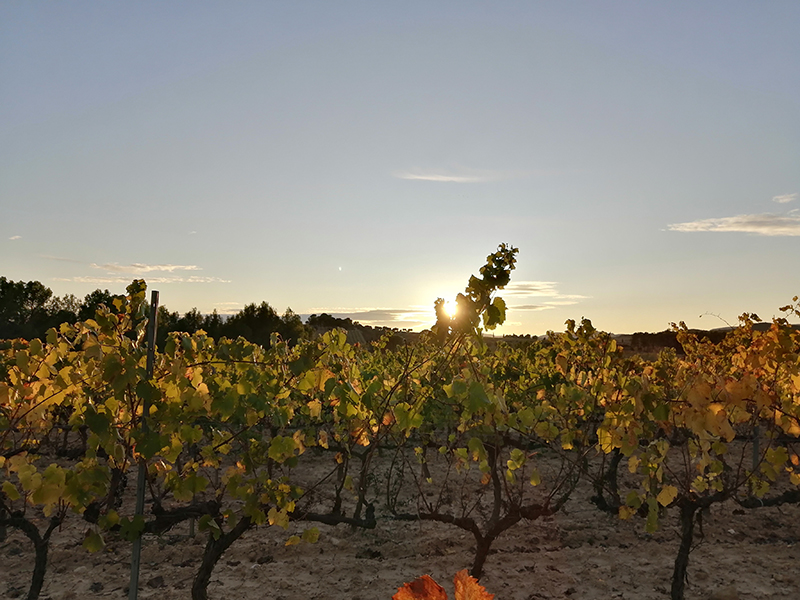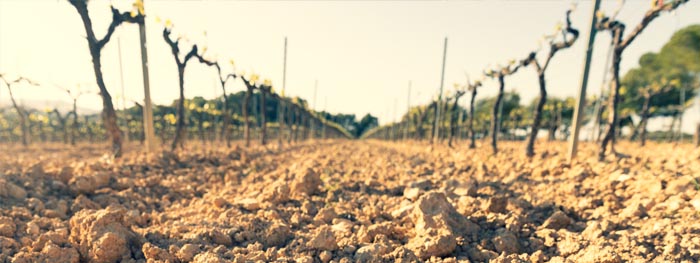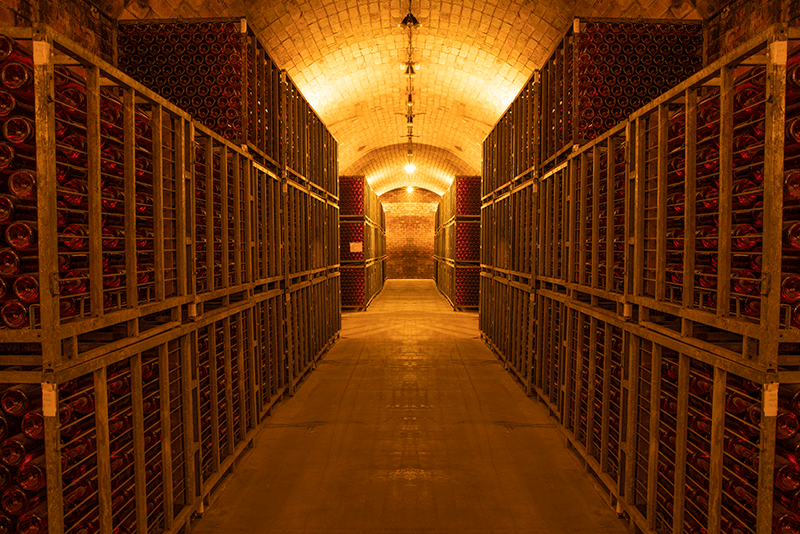Autumn is a magical season! After the intense rhythm of the harvest, comes the tranquility! It’s like the cozy calm after the storm … At Naveran we like it a lot, yes. It is a time to let go and at the same time to start thinking. To wait for the leaves to finish falling to start pruning, to think of formulas for future blends, to imagine what the new vintages will be like … And all this while autumn gives us landscapes of fire and golden afternoons. We explain what happens during the autumn months in the vineyard and in the Cavas Naveran winery!
Autumn in the Cavas Naveran vineyard
During autumn, the Cavas Naveran vineyards prepare for the vegetative stop. Nature runs its course and we don’t need to intervene. We will let the land rest, but it is time to plow to oxygenate and distribute the moisture well.

The strain prepares for the vegetative stop
After the harvest, the vineyard needs to rest. The growth phase is over, the fruits have already been harvested and during the month of November the vine will begin to prepare to enter the vegetative stop. As the days shorten and the temperature drops, the strain prepares and, among other things, chlorophyll production decreases. This makes the leaf take on these tones that the beautiful autumn landscapes will give us. The strain wants to accumulate reserves for the vegetative stop, to protect itself during the colder months. That is why it will take the nutrients from the leaf, to accumulate them in the trunk and branches, and will let it fall. This process is slow and it is important to do so, since, as you may have deduced, the plant must accumulate the necessary reserves to spend the winter. It is valuable that the weather accompanies, that is, that we do not have a sudden drop in temperature.
The benefits of plowing in the fall
“We will plow to aerate the land.” It is an expression that is used a lot, but do you know why it is necessary to oxygenate the earth? The soil must facilitate drainage so that the water reaches the roots correctly. Therefore, we need it not to be too compact. On the other hand, the roots must be able to receive oxygen, since they need it for the correct absorption of nutrients. It is true that they already receive oxygen from the water, but it is not always enough, especially if it does not rain what it should rain. However, too much water is also not good for the roots. We explain it to you below.
Climate change has been affecting the vineyard cycle for a long time, we have talked about it in other posts. Prepare for possible periods of drought or heavy rains. In both cases, plowing the land will help us. On the one hand, we need the rainwater to be absorbed to the maximum by the earth and in a uniform way, and that is why we also carry out these autumn plows, to distribute the humidity well. On the other hand, the stagnation of water produced by intense rains in a soil that does not drain can cause the roots to weaken and pests to appear.

Autumn in the Cavas Naveran winery
And now we go fully into the cellar. From the arrival of the tractors loaded with grapes of the various varieties until the coupage begins. We could call this period and all the work we do “autumn in the Cavas Naveran winery”. Unlike in the vineyard, where nature does much of the work, a large number of tasks are performed in the winery. In addition, each wine and each cava has its own production process, from maceration to aging. Therefore, the winery’s processes are very diverse.
We have harvested the grapes, now what?
Well, now it’s time to carry out a series of jobs to convert it into must or fermentation liquid (what we do is prepare for fermentation). For now, in this phase what we do is treat each variety separately, during the harvest and the fermentation. It is at the time of making the coupage, when we will make the mixtures (or not, in the case of the monovarietals).
Before fermentation begins, we must carry out a series of actions:
- Stripping and maceration:
The first is stripping, which consists of separating the grain from the staple, before maceration. But not with all varieties … For example, with the syrah to make our Clos dels Àngels wine we go to the maceration directly without de-rapping (carbonic maceration). We do it to obtain the fruity notes that characterize it so much.
Maceration is the process where the must rests with the skins or with the whole grain, in case it is carbonic. The maceration time will depend on the type of wine we want to get. And as you may have deduced, it plays a very important role in the tones of a wine or a cava. The same thing happens here, maceration is not a process that is always carried out: young white wines do not usually go through this process and in the case of aged white wines, is usually short.
But this is not a norm either. For example, we will explain how we do it with Clos Antònia, which is a very special white wine made with the Viognier variety. When we press grapes and obtain the must, we put it directly, without maceration, in 300-liter French oak barrels to ferment. It is a young wine, but with body. How do we get it to be unctuous? Well, we do a second malolactic fermentation and a barrel aging and battonage.
- Pressing
It is time for pressing, which consists of extracting the must to ferment by applying pressure gently.
- Fermentation
Fermentation begins when the grapes are harvested and can last for months. In fact, we can carry out more than one fermentation: in the case of cava, a second fermentation in the bottle, once the coupages have been made. And in the case of some wines, a second malolactic fermentation. In autumn, at Cavas Naveran, we are in the early stages: the first fermentation of the white wine varieties has already finished and that of the red wines, harvested later, will take a little longer.
Remember that fermentation is the process by which sugar is converted into alcohol and is carried out in stainless steel tanks or directly in barrels. Of course, always controlling the temperature.
- The coupage
And as the fermentation progresses, we are already thinking about the blends to come. It will be the time to do tests and more tests that consist of mixing different percentages of each variety until finding the perfect proportion of each coupage for each of our cavas from this vintage. We also started to organize the first clarifications based on bentonites to start preparing the wines for the runs when winter arrives.



